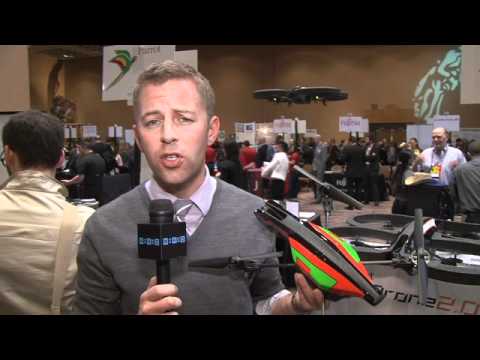Astronauts in Hollywood: Fact or Fiction?
Summary
Nicole Stott, a retired astronaut, shares her thoughts on the accuracy of space depiction in Hollywood movies. She discusses various aspects of space exploration, such as communication protocols, emergency scenarios, training techniques, and space speeds, in comparison to their representation in movies. The transcript sheds light on the complexity of astronaut training and the importance of safety in space exploration. The writer provides additional insights into science fiction scenarios and compares them to real-life situations.
Table of Contents
- First Transcript: Disorienting Conditions in First Man
- Second Transcript: Underwater Training for Spacewalks in Armageddon
- Third Transcript: T-38 Jet Training
- Fourth Transcript: Emergency Docking in Interstellar
- Fifth Transcript: Oxygen Sharing in Rocket Man
Introduction
Science fiction movies have always been a source of fascination for space enthusiasts. They provide a glimpse into the unknown and the infinite possibilities of what lies beyond. However, how accurate are these representations of space exploration? Are they based on real scientific principles or just creative liberties taken by Hollywood? In this transcript, we dive deeper into the accuracy of astronaut depictions in Hollywood movies with astronaut, Nicole Stott.
Q&A
First Transcript: Disorienting Conditions in First Man
Q: In the movie First Man, we see Neil Armstrong getting in and out of a multi-axis trainer. How accurate is this portrayal, and can you tell us more about it?
A: The multi-axis trainer was used to simulate disorienting conditions that astronauts might face in space. The movie depicted it well, but it’s not something that is used as much now. We use virtual reality simulations these days.
Q: Can you explain the science behind the multi-axis trainer?
A: As the name suggests, the trainer moves in multiple axes, which creates centrifugal forces on the astronaut’s body, simulating disorienting conditions experienced in spaceflight. The forces also simulate the feeling of tumbling or spinning out of control.
Second Transcript: Underwater Training for Spacewalks in Armageddon
Q: In the movie Armageddon, we see astronauts training for spacewalks underwater. Can you tell us more about this training technique and its accuracy?
A: This technique involves diving in a pool while wearing an underwater suit and simulating conditions that occur in space. This includes handling and using equipment while simulating weightlessness. The technique used in the movie was quite accurate, and we still use it today.
Q: Can you explain how diving in a pool can simulate weightlessness?
A: When you dive down in a pool, your body experiences less gravitational pull, which mimics the feeling of weightlessness in space. This training technique is also used to simulate the conditions that astronauts might face when performing tasks in space, such as controlling movements in a bulky spacesuit.
Third Transcript: T-38 Jet Training
Q: In the movie The Right Stuff, we see astronauts training in T-38 jets. Can you tell us more about this training, and how accurate is it?
A: T-38 jet training is a part of astronaut training that involves working in a complex system similar to what we use in a space shuttle. The training technique depicted in the movie was quite accurate, and we still use it today.
Q: What kind of conditions do astronauts experience during T-38 jet training?
A: The training involves experiencing extreme conditions such as high G-forces, which help astronauts build endurance and mental toughness. The training also helps them work in a teamwork environment, where communication and coordination must be impeccable.
Fourth Transcript: Emergency Docking in Interstellar
Q: In the movie Interstellar, we see spacecraft docking using manual flight capability and retro thrusters. How accurate is this depiction in emergency scenarios?
A: The manual flight capability and usage of retro thrusters in emergency scenarios are quite accurate. However, the process itself is more complex in real life, involving many checks and balances to ensure a safe dock.
Q: Can you explain how the manual flight capability and retro thrusters work?
A: The manual flight capability allows the astronaut to take full control of the spacecraft’s flight path and direction. The retro thrusters slow down the spacecraft’s speed by firing the engines in the opposite direction, creating thrust in the opposite direction of motion.
Fifth Transcript: Oxygen Sharing in Rocket Man
Q: In the movie Rocket Man, we see astronauts sharing oxygen in spacesuits. Is this scenario accurate?
A: This scenario is not very accurate. Sharing oxygen in a spacesuit can create more problems than it solves, as the oxygen needs of each astronaut are different.
Q: Can you explain why sharing oxygen in a spacesuit can be problematic?
A: Sharing oxygen can create problems like limiting the movement of one astronaut while accommodating the other astronaut. It can also cause the suit’s pressure to rise above safe levels, leading to severe injuries.
Conclusion
It can be hard to differentiate between science fiction and science fact, but the above transcripts provide insight into the intricate details of astronaut training and space exploration portrayed in movies. It’s clear that Hollywood takes certain creative liberties with astronaut depictions in movies; however, the training techniques and emergency scenarios shown in movies are quite accurate. The transcripts highlight the importance of safety and the complexity of the tasks involved in space exploration, while also showcasing the influence of science fiction movies in shaping our ideas about space.







